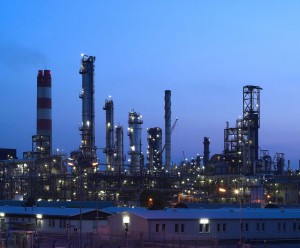With naphtha being the most important petrochemical feedstock as well as a significant gasoline blendstock, its demand and values continue impacting refining and petrochemical margins and strategic investment decisions. During normal operations, light naphtha (LN) production, for example, can be maximized to reduce the flash point of heavy naphtha (HN) to allow maximum blending of HN into diesel. This is just one example, but a variety of desired outlets for LN is why LN has increased in price from $425/tonne in mid-2017 to close to $666/tonne towards the end of May 2018 (see Markets Insider).*
In the normal course of hydrocracking units processing heavy vacuum gas oil (HVGO), the whole range of naphtha production increases throughout the hydrocracking unit’s catalyst cycle and peaks toward end-of-run (EOR), but so does polynuclear aromatic (PNA) production. Aside from naphtha production through the hydrocracker, heavy coker naphtha, being as olefinic as it is, increases the level of polynuclear aromatic (PNA) precursors, therefore increasing PNA buildup that the refiner has to contend with while on the path to monetizing LN.
In an extinction type of recycle hydrocracker with high conversion targets, heavy polynuclear aromatics (HPNAs) production likely increases as CHGO is added to the hydrocracker feed. According to comments at a recent refinery conference, one refiner noted that conversion needs to be reduced and the unconverted oil (UCO) purge rate increased to compensate for the increased HPNA production. So, if a blended feed HPNA’s levels start climbing, catalyst deactivation will likely increase.
Several refiners have commented that the ability to perform online measurement of HPNAs in UCO would provide more flexibility in limiting HPNA within targeted levels. As more difficult feed is added to refinery hydrocrackers, optimization (within limits) is required. For a full-conversion unit with recycle, HPNA formation will increase as the endpoint is increased and/or the amount of coker gasoil in the feedstock increases.
HPNAs will have to be managed to avoid buildup in the recycle oil. For example, Haldor Topsoe’s solution is based on the HPNA Trim™ technology, which can be added to an existing hydrocracking unit. It basically involves removing the HPNAs with a simple stripping operation added to the back-end on the recycle oil and separating HPNAs out based on their higher boiling point, thereby greatly reducing the likelihood of deactivation of the catalyst due to the condensation of the heavy PNAs.
Processing heavier and cracked feedstocks poses many challenges to the hydrocracking unit. Thermally-cracked feedstock such as HCGO, apart from being unsaturated, has relatively lower API, higher sulfur, and nitrogen content, higher proportion of C7 insolubles, and Conradson carbon residue (CCR). An increase in the HCGO distillation endpoint results in a significant increase in the proportion of PNAs and asphaltenes, both of which are coke precursors, resulting in an exponential increase in catalyst deactivation rates. However, if the value of LN continues to increase, more refiners could consider investing in ways to deal with PNAs.
*Note: The metric ton, equal to 1000 kilograms (about 2204 pounds) is officially called “tonne.”








Leave a Reply
You must be logged in to post a comment.